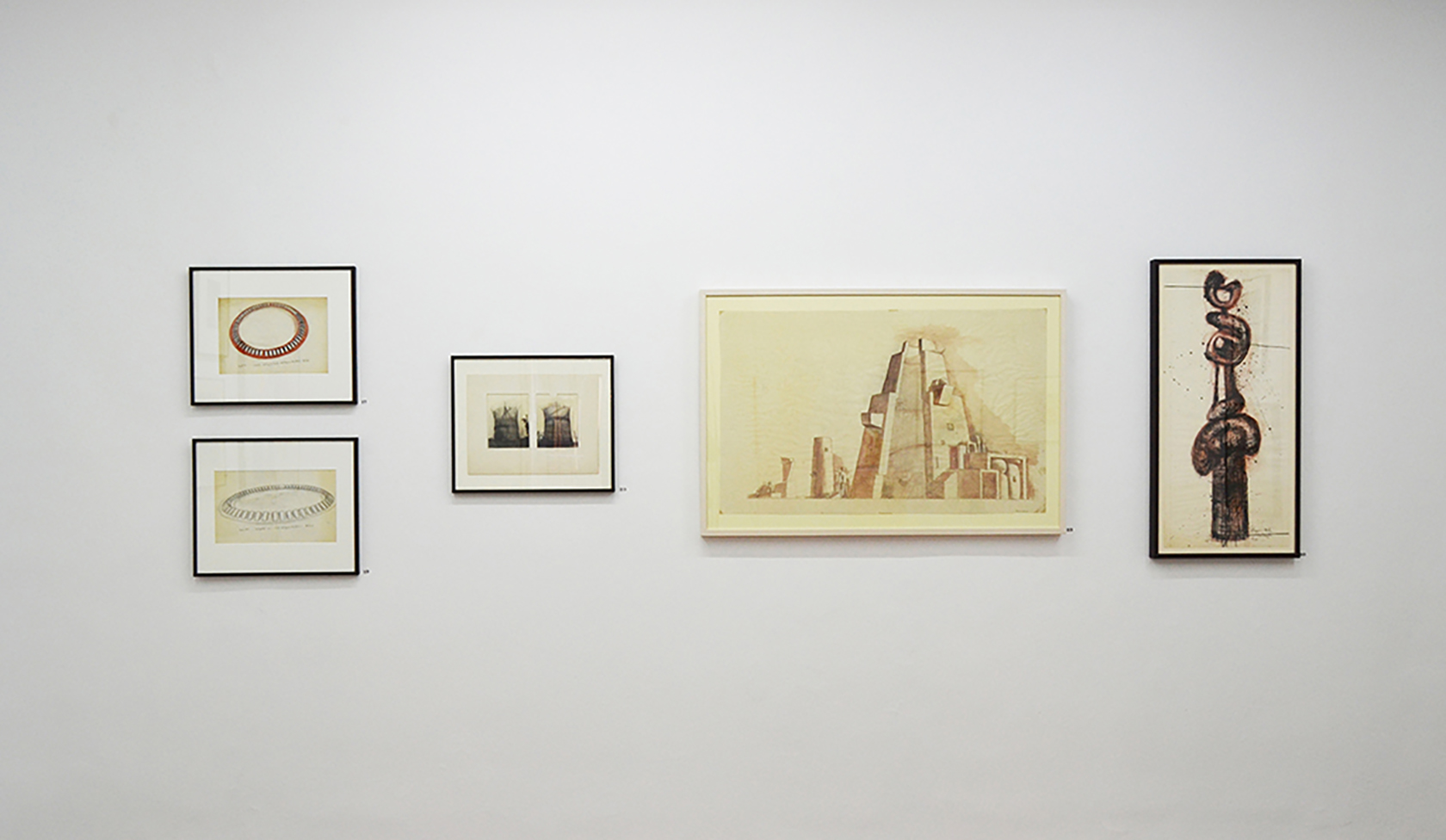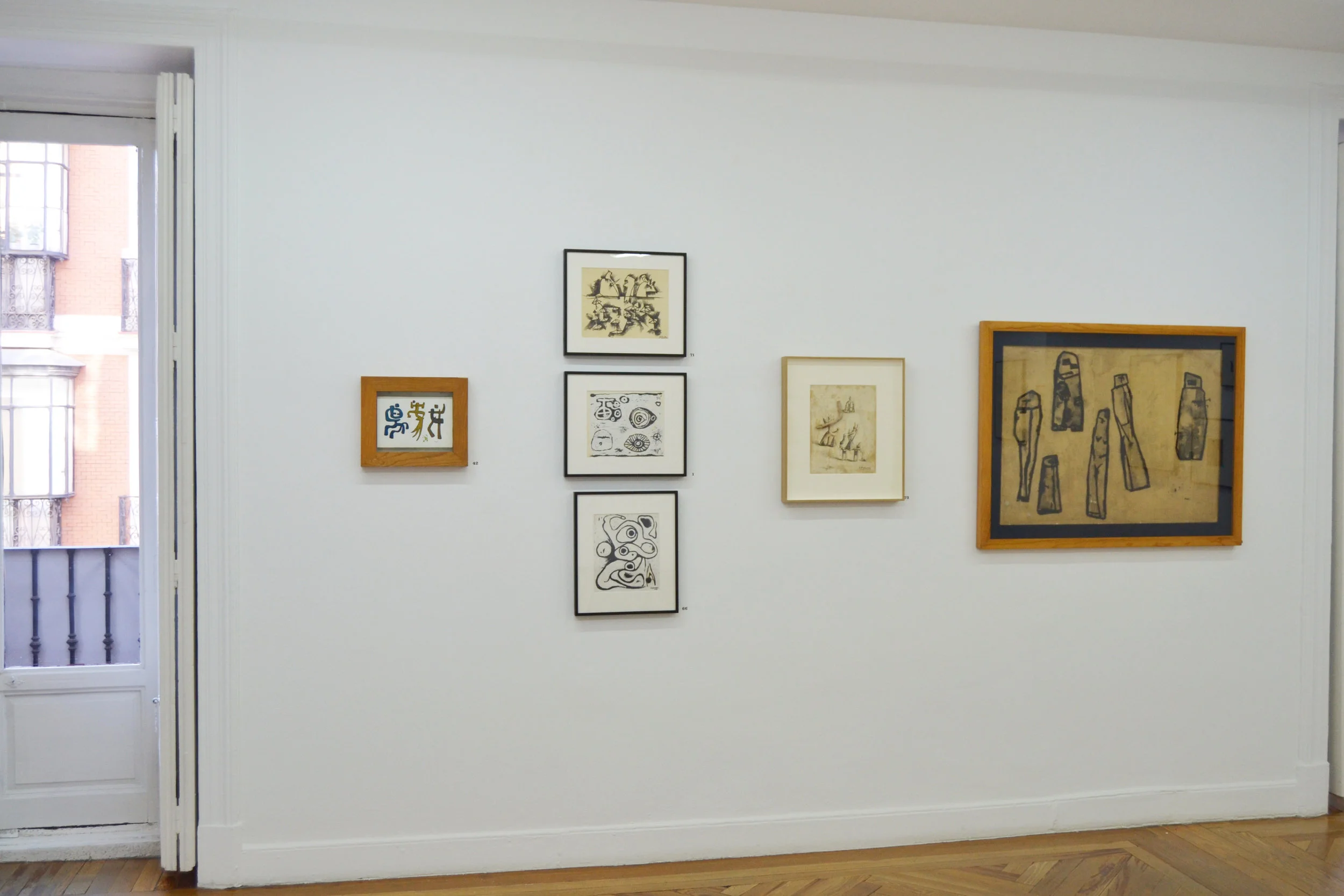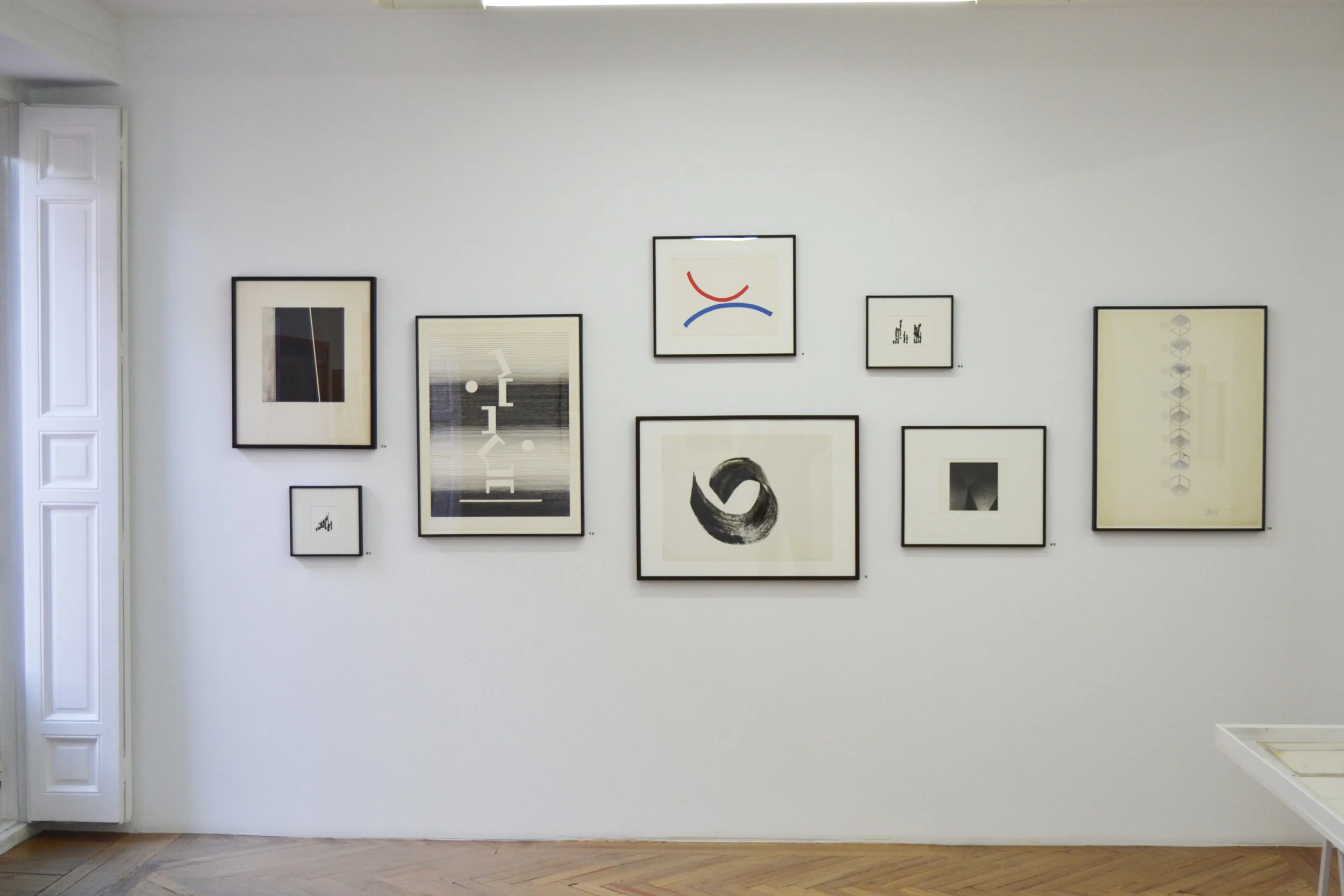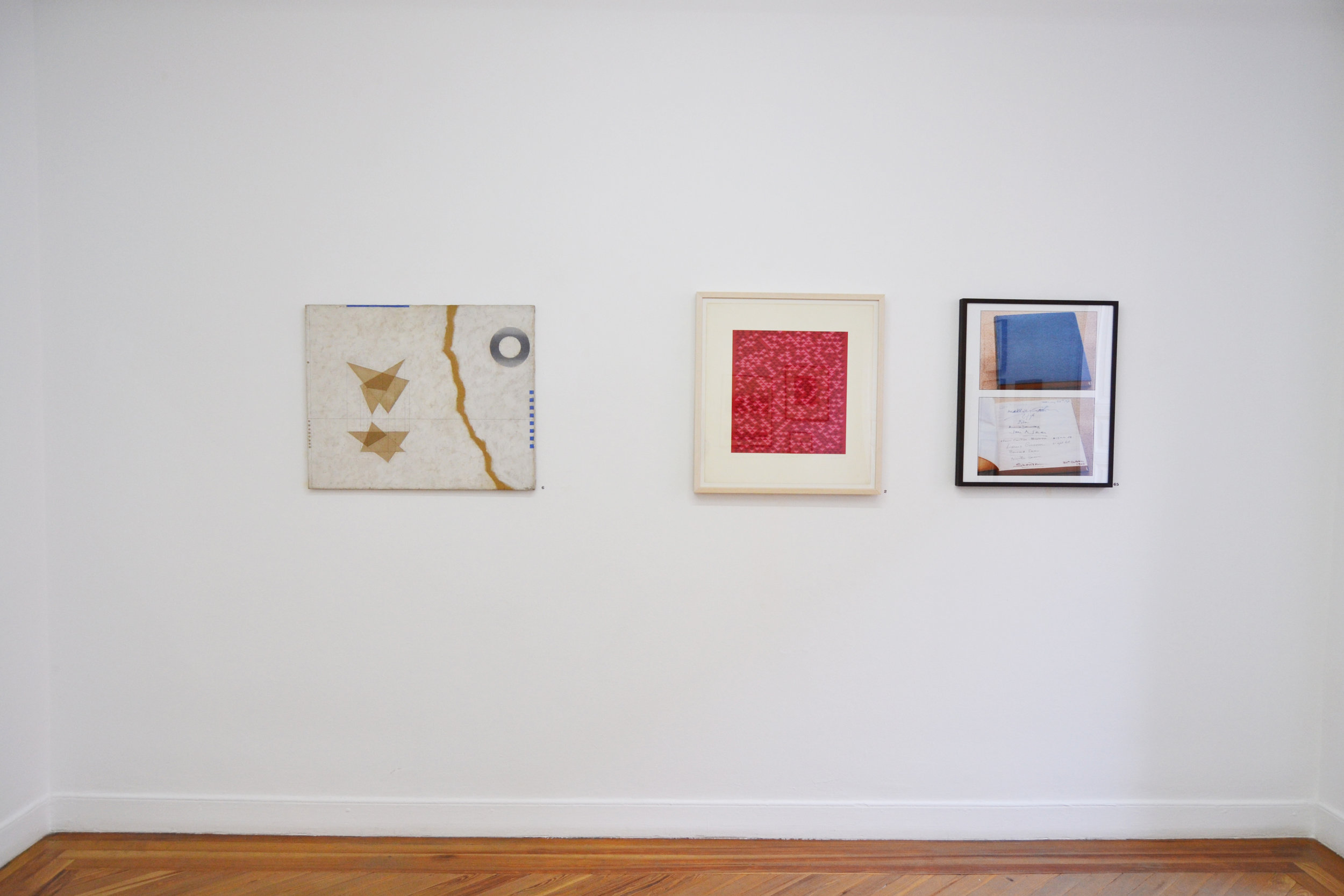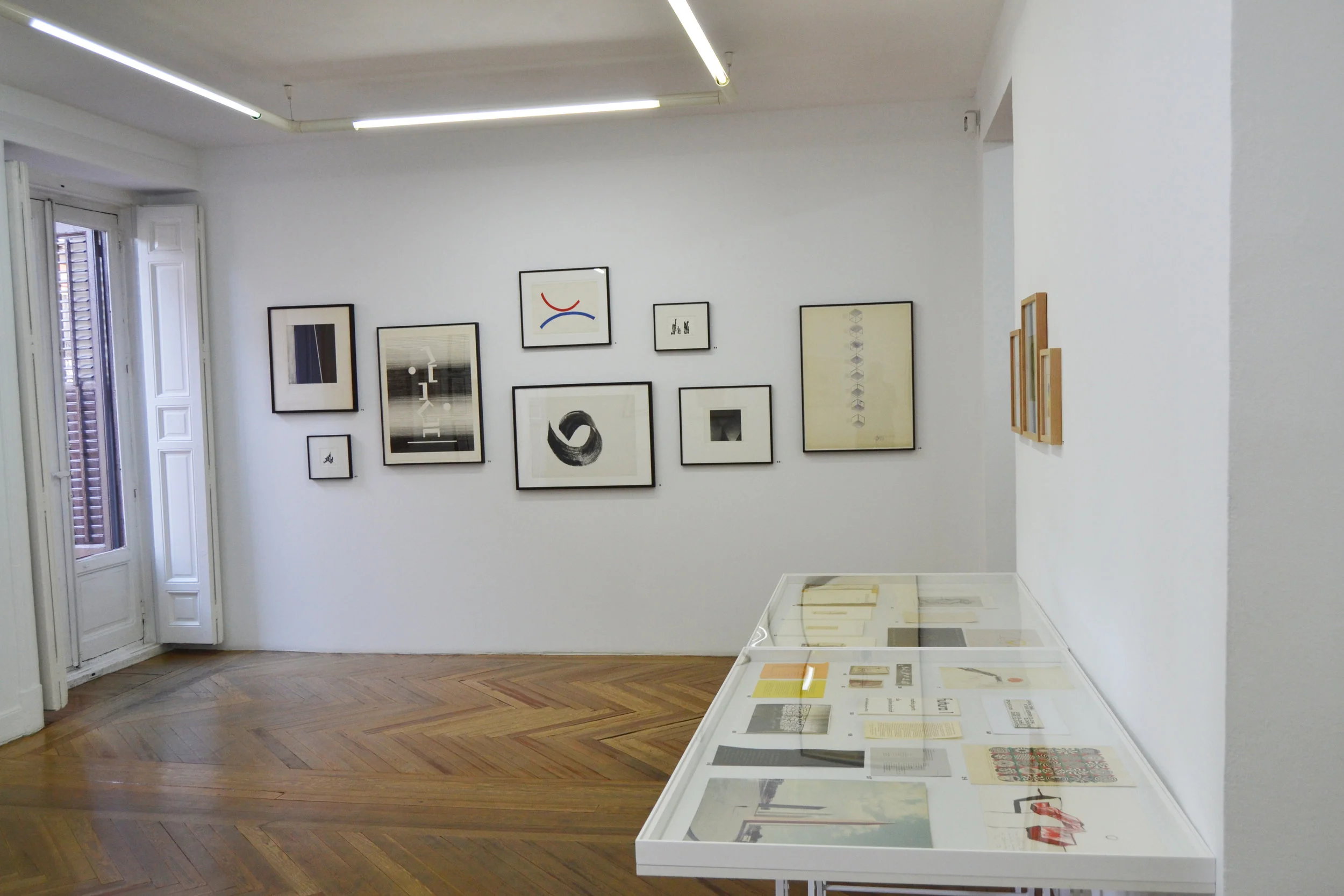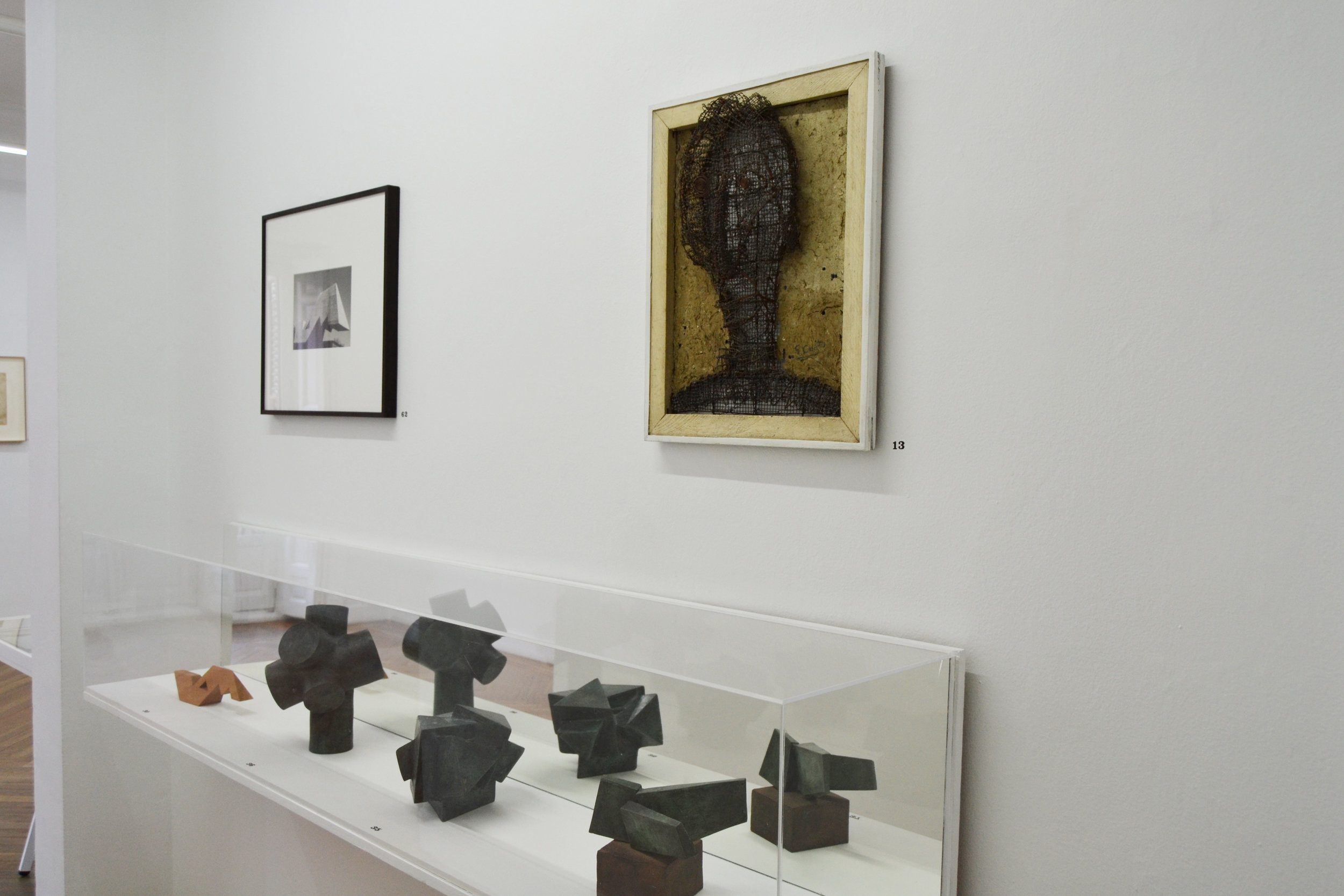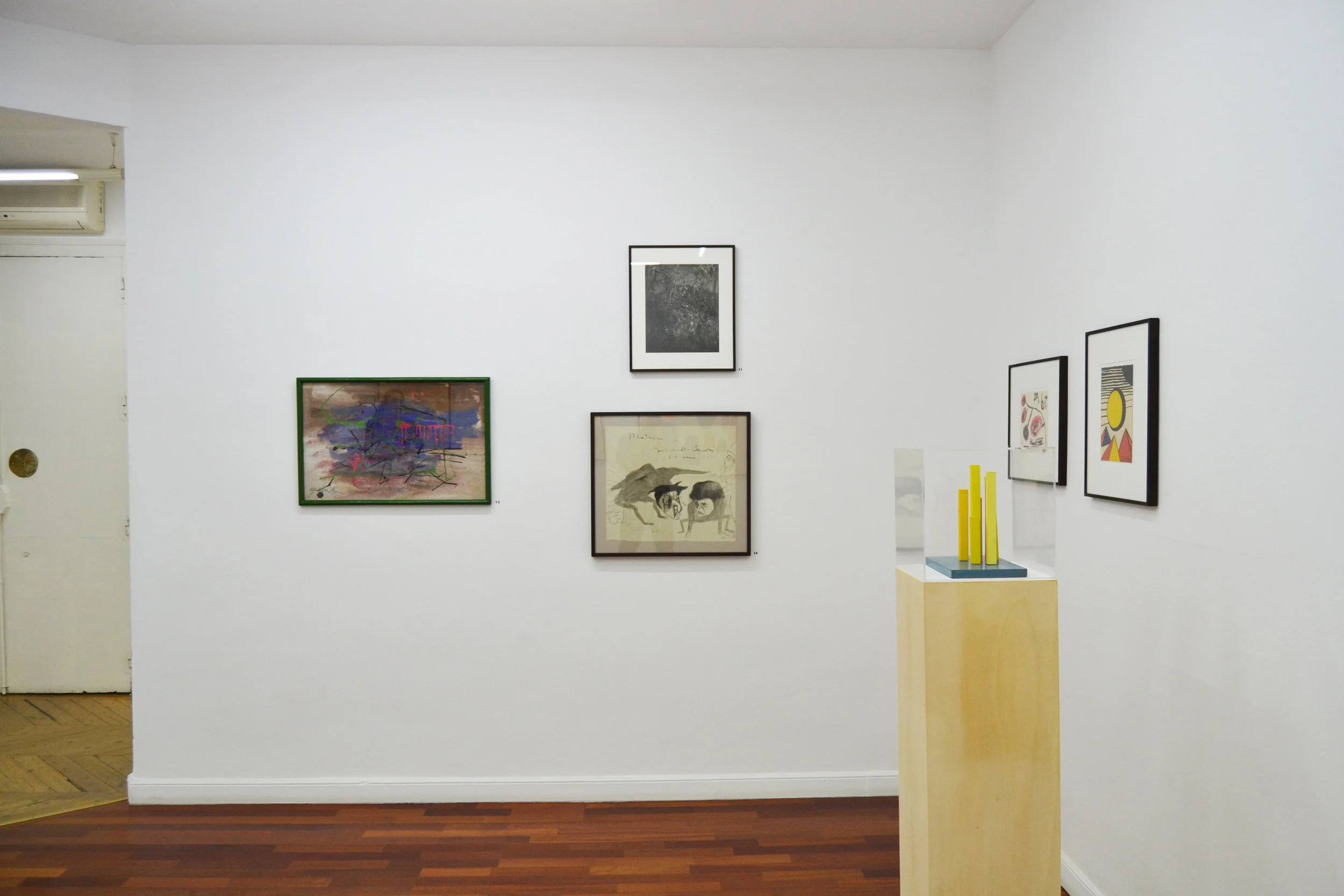Los círculos de Mathias Goeritz
1 marzo – 6 mayo 2019
Fermín Aguayo · Anni Albers · Alcopley ·Herbert Bayer · Luis Barragán · Alexander Calder · Bruce Conner · Ángel Crespo · Germán Cueto · José Luis Cuevas · Juan Luis Díaz · Helen Escobedo · Ángel Ferrant · Gonzalo Fonseca · Pedro Friedeberg · Marianne Gast · Kati Horna · Lake Verea · Luc Peire · Santiago Lagunas · Roberto Montenegro · Henry Moore · Hans Namuth · Francisco Nieva · Benjamín Palencia · Chucho Reyes · Sebastián · Michel Seuphor · Alfonso Soto Soria · Tony Stubbing · Kiyoshi Takahashi · Eduardo Vicente · Mariana Yampolsky
A lo largo de su trayectoria Mathias Goeritz mantuvo vínculos muy intensos con artistas, críticos e historiadores de la escena internacional. Ocupó un lugar destacado en los debates sobre la modernidad en España y México, y estableció conexiones tanto en Europa como en Estados Unidos. Estas relaciones de amistad y debate se reflejan en el conjunto de obras de otros artistas que Goeritz fue reuniendo a lo largo de su vida. En Los circulos de Goeritz esbozamos el mapa afectivo y de complicidades que mantuvo con este amplio grupo de artistas a través de las obras que conservaba en su colección personal.
Ya durante su estancia en la España de finales de los años cuarenta se deja ver su incansable actividad donde trabaja de cerca con el Grupo Pórtico, Francisco Nieva, Ángel Ferrant o Benjamín Palencia. Además de ilustrar publicaciones, escribe catálogos y realiza una intensa labor de colaboración editorial ejemplificada en la carpeta El Circo, editada por Rafael Santos Torroella, o en la serie La Partida de Baile con poemas de Jorge Guillén.
Después de su paso por España -donde su presencia fue fundamental para la formación de la Escuela de Altamira- viaja a México en 1949. Ahí participa de forma activa en los debates alrededor del muralismo y de la apertura del arte nacional al lenguaje internacional. La construcción del Museo de El Eco supone un parteaguas radical en el concepto de arte y arquitectura en México al haber sido concebido como un espacio para experimentar la arquitectura emocional. En la exposición se incluye el boceto del mural que diseñó Henry Moore para El Eco, ejecutado por Alfonso Soto Soria.
Mathias Goeritz’s Circles
From March 1 to May 6, 2019
Fermín Aguayo · Anni Albers · Alcopley ·Herbert Bayer · Luis Barragán · Alexander Calder · Bruce Conner · Ángel Crespo · Germán Cueto · José Luis Cuevas · Juan Luis Díaz · Helen Escobedo · Ángel Ferrant · Gonzalo Fonseca · Pedro Friedeberg · Marianne Gast · Kati Horna · Lake Verea · Luc Peire · Santiago Lagunas · Roberto Montenegro · Henry Moore · Hans Namuth · Francisco Nieva · Benjamín Palencia · Chucho Reyes · Sebastián · Michel Seuphor · Alfonso Soto Soria · Tony Stubbing · Kiyoshi Takahashi · Eduardo Vicente · Mariana Yampolsky
Throughout his career, Mathias Goeritz maintained intimate relationships with many artists, critics and historians from the international scene. He played a prominent role in debates about modernity in Spain and Mexico, and he established bonds in Europe and the United States. These relationships of friendship and debate are evident in the set of works from by artists that Goeritz gathered throughout his life. In Goeritz’s Circles we sketch the map of affection and complicity that he held with a broad group of artists through the works he kept in his personal collection.
During his stay in Spain at the end of the 1940s we can see his tireless activity working closely with the Pórtico group, Francisco Nieva, Ángel Ferrant and Benjamín Palencia. Besides illustrating publications, he wrote catalogues and carried out intense collaborative editorial work, which is evident in El Circo, edited by Rafael Santos Torroella, or La Partida de Baile series with poems by Jorge Guillén.
After his stay in Spain—where he was essential for the Altamira School founding—he traveled to Mexico in 1949. There he participated actively in the debates about muralism and the opening of national art to international language. The construction of the El Eco museum was a watershed moment for art and architecture in Mexico. It was conceived as a space for experimenting emotional architecture. The exhibit includes the sketch of the mural designed by Henry Moore for El Eco and executed by Alfonso Soto Soria.
The high point of Mathias Goeritz’s collaborations with different architects such as Luis Barragán are the towers of Ciudad Satélite. Today the towers headline many treatises about contemporary architecture. This experience put him in the forefront for participating in the 1968 Olympics’ cultural program, where he was responsible for the Route of Friendship, a monumental public sculpture project with work by artists from different countries. Among others, the project included the participation of Herbert Bayer, Bauhaus professor, Helen Escobedo, Kioshi Takahashi, Gonzalo Fonseca as well as Alexander Calder and Germán Cueto as special guests. Another important public work instigated by Goeritz is the Espacio Escultórico project. This work was first conceived as anonymous by a group of artists led by Goeritz and carried out in the grounds of the National Autonomous University of Mexico. Many drawings of the project by Helen Escobedo are part of the exhibit, as well as works from other Mexican artists such as Chucho Reyes, José Luis Cuevas, Pedro Friedeberg and Sebastián, most of them with personal inscriptions.
Goeritz’s relationships extended beyond Mexico, and these friendships served more than once as bilateral bridges for artists like Anni Albers or Calder, who created different projects in the country. Goeritz’s interest in concrete poetry and mail art led him to collaborate with the likes of Hans Jorg Mayer in his Futura project. He designed posters and invitations for friends such as for the exhibits of Pedro Friedeberg and Pedro Pablo Preux in the Diana Gallery founded by Galician musician Jesús Bal y Gay and by Rosa García Ascot. Throughout his life he exchanged works and correspondence with creators like Bruce Conner, Al Copley, Juan Luis Díaz, Michel Seuphor and Luc Peire while his work was photographed by Kati Horna, his wife Marianne Gast, Hans Namuth and Mariana Yampolsky.
Goeritz’s Circles is an exhibit that seeks to showcase this broad and diverse dialogue whose scope has yet to be evaluated in the context of art in Mexico.
